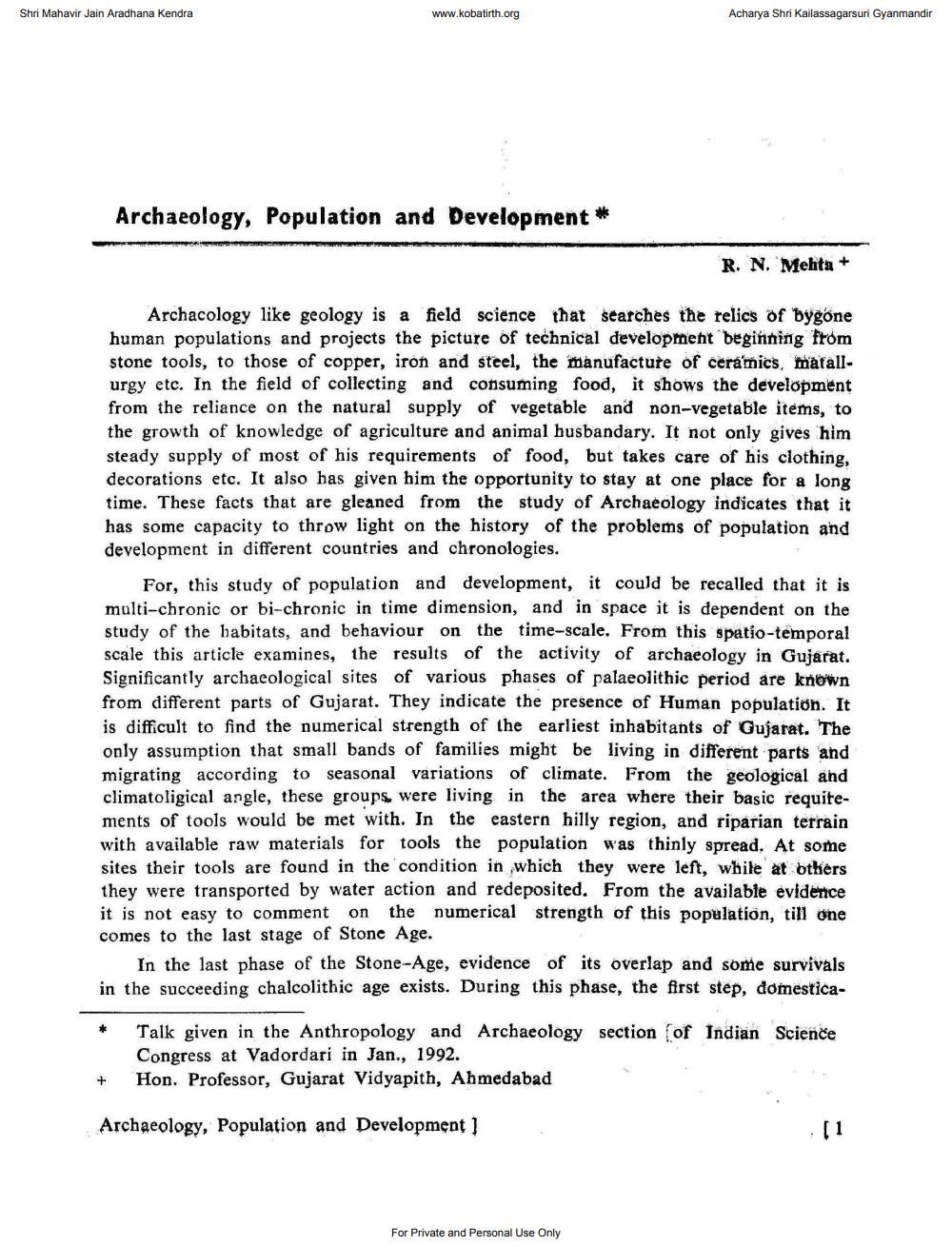Book Title: Samipya 1991 Vol 08 Ank 01 02 Author(s): Pravinchandra C Parikh, Bhartiben Shelat Publisher: Bholabhai Jeshingbhai Adhyayan Sanshodhan Vidyabhavan View full book textPage 3
________________ Shri Mahavir Jain Aradhana Kendra www.kobatirth.org Archaeology, Population and Development * Acharya Shri Kailassagarsuri Gyanmandir R. N. Mehta Archacology like geology is a field science that searches the relics of bygone human populations and projects the picture of technical development beginning from stone tools, to those of copper, iron and steel, the manufacture of ceramics, matallurgy etc. In the field of collecting and consuming food, it shows the development from the reliance on the natural supply of vegetable and non-vegetable items, to the growth of knowledge of agriculture and animal husbandary. It not only gives him steady supply of most of his requirements of food, but takes care of his clothing. decorations etc. It also has given him the opportunity to stay at one place for a long time. These facts that are gleaned from the study of Archaeology indicates that it has some capacity to throw light on the history of the problems of population and development in different countries and chronologies. For, this study of population and development, it could be recalled that it is multi-chronic or bi-chronic in time dimension, and in space it is dependent on the study of the habitats, and behaviour on the time-scale. From this spatio-temporal scale this article examines, the results of the activity of archaeology in Gujarat. Significantly archaeological sites of various phases of palaeolithic period are known from different parts of Gujarat. They indicate the presence of Human population. It is difficult to find the numerical strength of the earliest inhabitants of Gujarat. The only assumption that small bands of families might be living in different parts and migrating according to seasonal variations of climate. From the geological and climatoligical angle, these groups were living in the area where their basic requitements of tools would be met with. In the eastern hilly region, and riparian terrain with available raw materials for tools the population was thinly spread. At some sites their tools are found in the condition in which they were left, while at others they were transported by water action and redeposited. From the available evidence it is not easy to comment on the numerical strength of this population, till one comes to the last stage of Stone Age. In the last phase of the Stone-Age, evidence of its overlap and some survivals in the succeeding chalcolithic age exists. During this phase, the first step, domestica For Private and Personal Use Only Talk given in the Anthropology and Archaeology section [of Indian Science Congress at Vadordari in Jan., 1992. + Hon. Professor, Gujarat Vidyapith, Ahmedabad. Archaeology, Population and Development ] [1Page Navigation
1 2 3 4 5 6 7 8 9 10 11 12 13 14 15 16 17 18 19 20 21 22 23 24 25 26 27 28 29 30 31 32 ... 134
